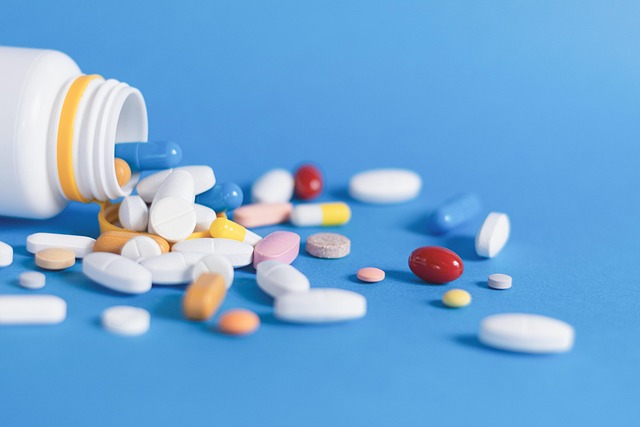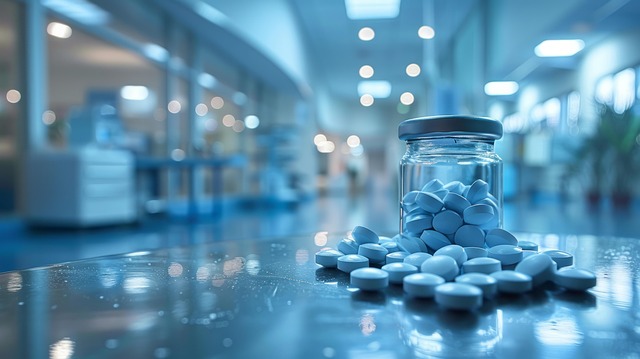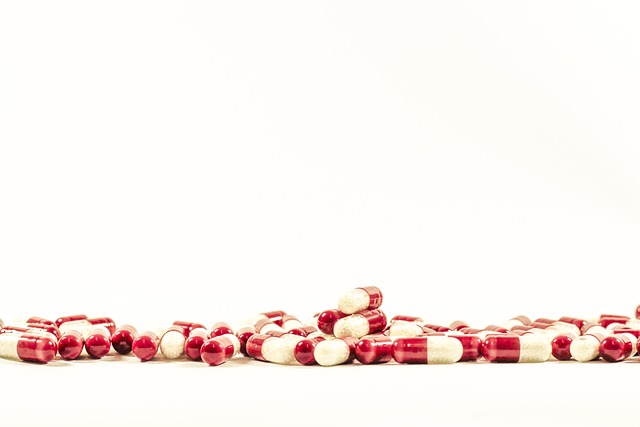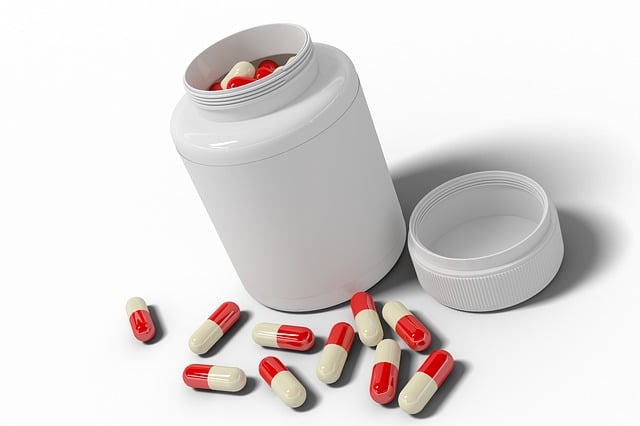GLP-1 drugs (exenatide, liraglutide) mimic natural blood sugar regulator, improving glycemic control and weight management in type 2 diabetes. While effective, they carry side effects like gastrointestinal distress, reduced appetite, headaches, dizziness, fatigue, pancreatitis, hypoglycemia, and potential long-term risks. Management involves close monitoring, dietary adjustments, dose modifications, education, and communication with healthcare providers to ensure safety and optimal outcomes.
“GLP-1 therapy, utilizing glucagon-like peptide-1 (GLP-1) drugs, has emerged as a powerful tool in managing type 2 diabetes and promoting weight loss. While these medications offer significant benefits, they’re not without side effects. This article delves into the intricacies of GLP-1 drugs, exploring their mechanism of action and dissecting common concerns like nausea, gastrointestinal issues, hypoglycemia, and weight loss. We also discuss long-term safety considerations, patient education, and adherence to these therapeutic regimens, providing a comprehensive guide for both healthcare providers and patients.”
Understanding GLP-1 Drugs and Their Mechanism of Action

GLP-1 drugs, or glucagon-like peptide-1 therapies, are a class of medications designed to mimic the effects of the natural hormone GLP-1. This hormone plays a crucial role in regulating blood sugar levels by stimulating insulin release and suppressing glucagon secretion. By administering synthetic GLP-1 drugs, such as exenatide or liraglutide, patients with type 2 diabetes can experience improved glycemic control. These drugs work by binding to specific receptors on the surface of cells in the pancreas, leading to enhanced insulin production and reduced appetite, which contributes to weight loss.
The mechanism of action for GLP-1 drugs involves several key processes. They promote insulin secretion from beta cells in a glucose-dependent manner, meaning they stimulate insulin release only when blood sugar levels are high. Additionally, GLP-1 drugs slow down the emptying of the stomach, leading to improved feelings of fullness and reduced appetite. This dual action helps individuals manage their diabetes and maintain healthier weight levels, making these therapies a valuable tool in the treatment of type 2 diabetes.
Common Side Effects Associated with GLP-1 Therapy

GLP-1 therapy, while effective in managing diabetes and promoting weight loss, is not without its side effects. Some individuals may experience mild to moderate gastrointestinal symptoms such as nausea, vomiting, diarrhea, or abdominal pain. These symptoms are often temporary and subside as the body adjusts to the medication. GLP-1 drugs can also cause a reduction in appetite, leading to decreased hunger and potential weight loss, which might be desirable for some patients but could result in nutritional deficiencies if not managed properly.
Other common side effects include headaches, dizziness, fatigue, and an increased risk of pancreatitis. It’s crucial for patients to report any persistent or severe symptoms to their healthcare provider. Proper management involves close monitoring, dietary adjustments, and, if necessary, dose adjustments or alternative treatments.
Management Strategies for Nausea and Gastrointestinal Issues

Nausea and gastrointestinal issues are common side effects experienced by patients undergoing GLP-1 therapy, but effective management strategies can significantly improve patient comfort and adherence to treatment. For nausea, healthcare providers often recommend starting with conservative measures such as ensuring adequate hydration, offering small frequent meals, and suggesting antiemetic medications as needed. Lifestyle adjustments like engaging in gentle exercise and practicing relaxation techniques can also help alleviate nausea symptoms.
In cases where gastrointestinal issues persist or become severe, a more tailored approach may be required. This could involve adjusting the dosage of GLP-1 drugs, switching to an alternative medication, or incorporating prokinetic agents to enhance gastric emptying. Close monitoring by healthcare professionals is crucial to fine-tune these management strategies and ensure optimal patient outcomes.
Hypoglycemia: Recognizing and Treating Low Blood Sugar

Hypoglycemia, or low blood sugar, is a common side effect associated with GLP-1 drug therapy. This condition occurs when the level of glucose in the blood drops below normal range. It’s important to recognize the signs early on, as they can include dizziness, sweating, confusion, and rapid heartbeat. If left untreated, hypoglycemia can lead to more severe symptoms such as seizures or loss of consciousness.
Treatment involves quickly raising the blood sugar level. This can be done through consuming a high-carbohydrate snack or drink, such as fruit juice or glucose tablets. It’s crucial for patients on GLP-1 therapy to carry these items with them at all times and to regularly monitor their blood sugar levels throughout the day. Regular communication with healthcare providers is also essential to adjust medication doses or timing as needed.
Weight Loss and Other Metabolic Benefits: A Double-Edged Sword

GLP-1 therapy, facilitated by drugs mimicking the effects of glucagon-like peptide-1, has been hailed for its potent metabolic benefits, particularly in weight loss and blood sugar control. These drugs stimulate insulin secretion in a glucose-dependent manner, leading to improved glycemic management. Moreover, they increase feelings of satiety, reducing appetite and food intake, which contributes significantly to weight reduction. However, this dual advantage comes with nuances. While weight loss is a significant advantage for many patients, it can also be a source of adverse effects, especially when substantial weight loss occurs rapidly. This may lead to increased risk of osteoporosis and muscle wasting. Therefore, managing weight loss expectations and monitoring patients’ nutritional status is crucial during GLP-1 drug therapy.
Long-Term Safety Considerations and Monitoring Guidelines

In terms of long-term safety considerations for GLP-1 therapy, continuous monitoring is essential to manage potential side effects and ensure optimal patient outcomes. GLP-1 drugs have demonstrated an excellent safety profile in clinical trials, but as with any medication, individual responses may vary. One key area of focus is the risk of hypoglycemia, especially when combined with other antidiabetic agents. Regular blood glucose monitoring is crucial for patients undergoing GLP-1 therapy to prevent severe hypoglycemic episodes.
Monitoring guidelines should include frequent assessments of hematological parameters, renal function, and liver enzymes to detect any adverse effects related to these systems. Additionally, since GLP-1 drugs can affect cardiovascular systems, close surveillance for signs of heart-related events is necessary. Patients should be educated about recognizing symptoms of adverse reactions and reporting them promptly to healthcare providers for timely intervention. Regular follow-up visits with healthcare professionals enable early detection of any concerning trends and allow for prompt adjustments in therapy if needed.
Patient Education and Adherence to GLP-1 Therapy Regimens

Patient education plays a pivotal role in the successful implementation and management of GLP-1 therapy. It is crucial to equip patients with knowledge about their condition, the purpose of GLP-1 drugs, and how these medications work to lower blood sugar levels. Healthcare providers should ensure that patients understand the importance of adhering strictly to the prescribed treatment regimen, including regular injection timings and dosages. This adherence is vital for reaping the full benefits of GLP-1 therapy and maintaining glycemic control.
Educational initiatives can foster better patient compliance by addressing common concerns and misconceptions surrounding injections, potential side effects, and lifestyle modifications required during treatment. Patients should be encouraged to actively participate in their care, report any unusual symptoms or reactions promptly, and regularly communicate with their healthcare teams for ongoing support and guidance.
